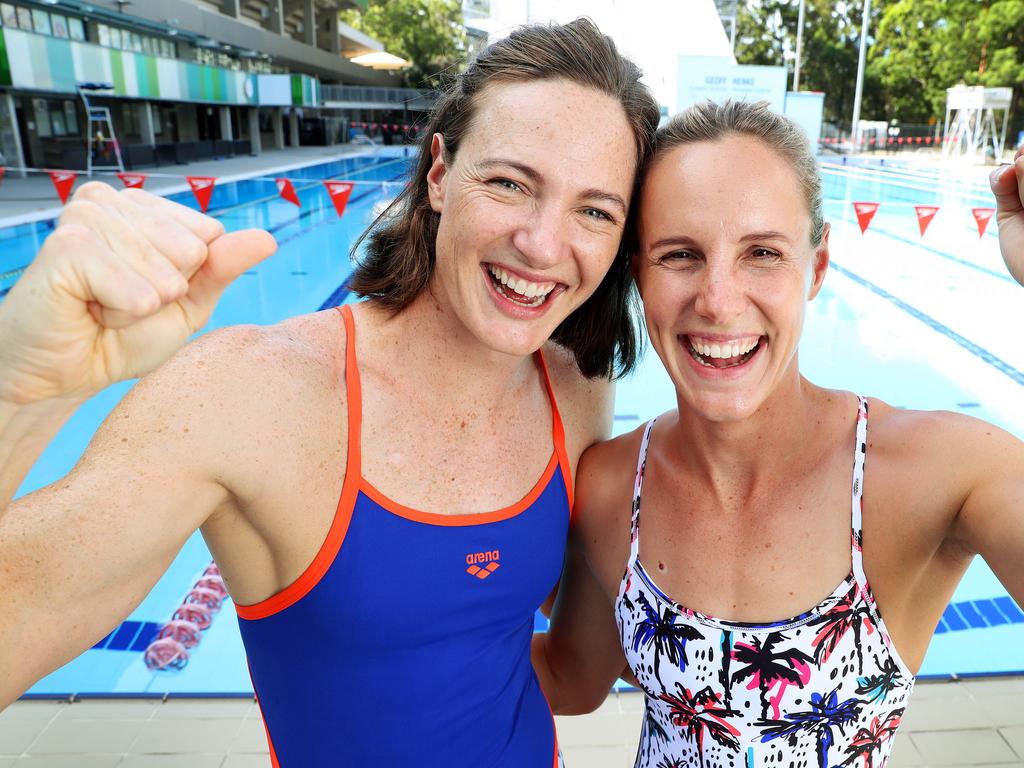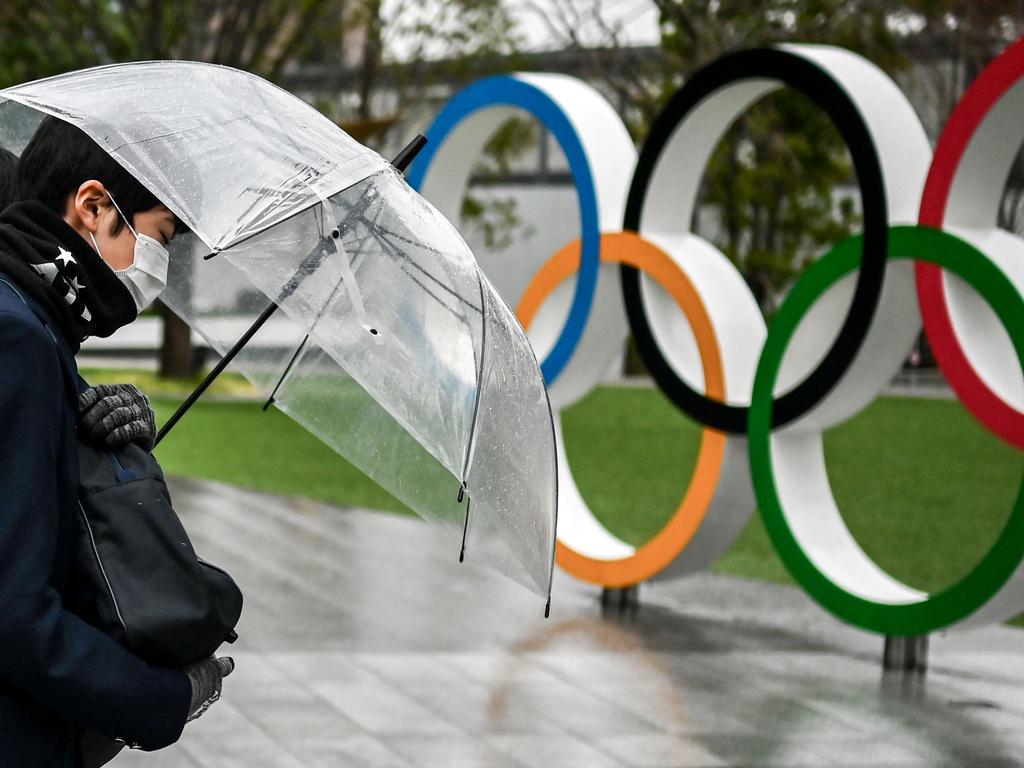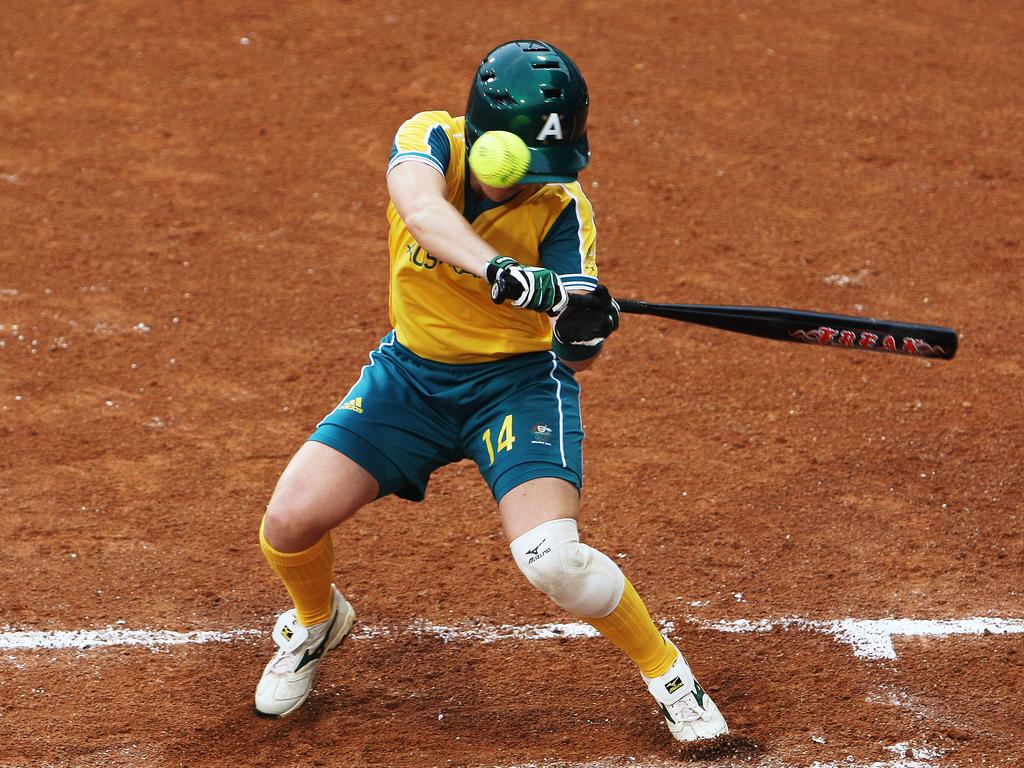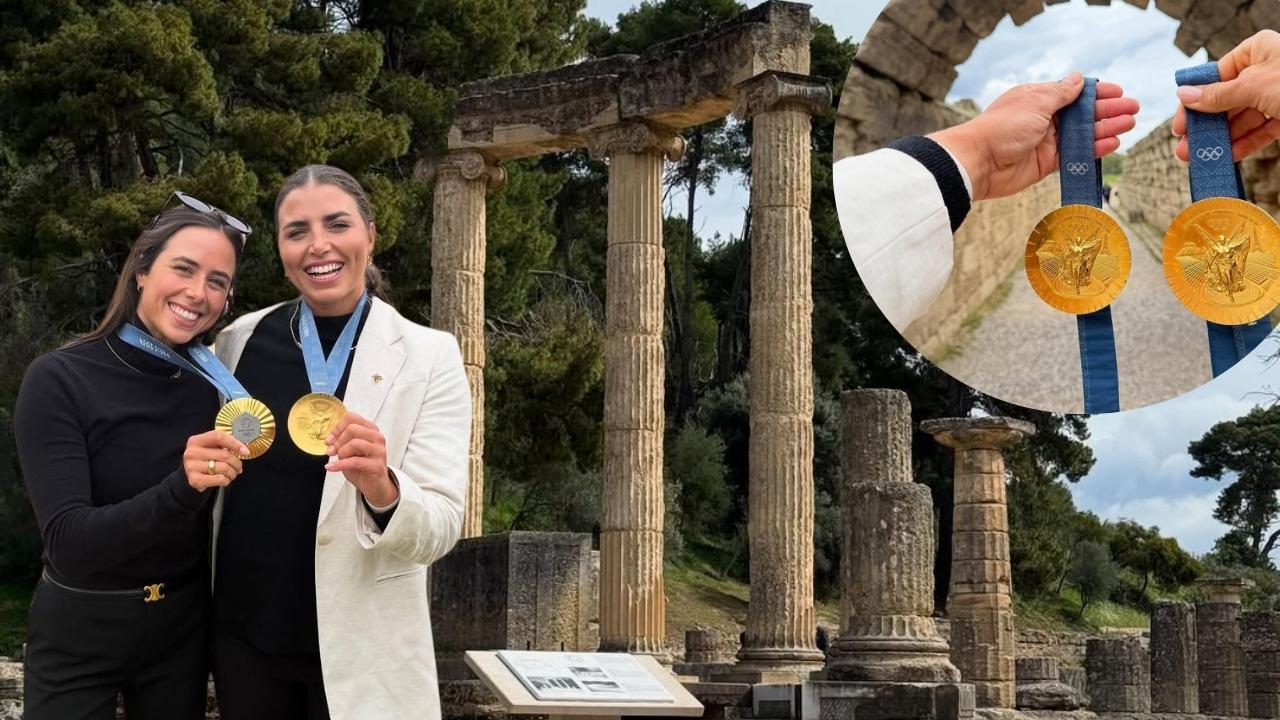Spinal surgery, a year-long recovery – Dani Stevens reveals her Olympic fight
Australia’s greatest discus thrower, Dani Stevens, needed spinal surgery after a weightlifting accident caused the loss of the use of her right arm.
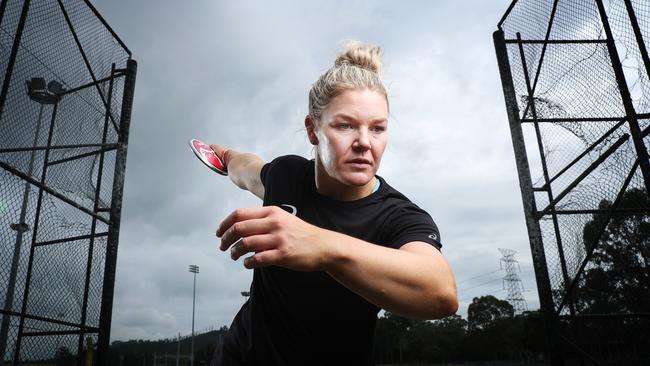
An emotional and powerful comeback is upon us. An epic return to competition by Australia’s greatest discus thrower, Dani Stevens, after she lost use of the tool of her trade, her right arm, during an injury ordeal so severe she required spinal surgery and a torturous year-long rehabilitation program.
When Stevens throws again in Sydney on Saturday night, she will be throwing herself into the deep end in pursuit this year of the only omission from her awe-inspiring resume: an Olympic medal.
Few people know the extent of the physical and psychological fight the ex-world champion and Commonwealth Games gold medallist has been through after a weightlifting session went unfathomably wrong leading up to what should have been the 2020 Tokyo Games – but she has revealed all to News Corp before her return at the Sydney Track Classic at Homebush Bay on Saturday night.
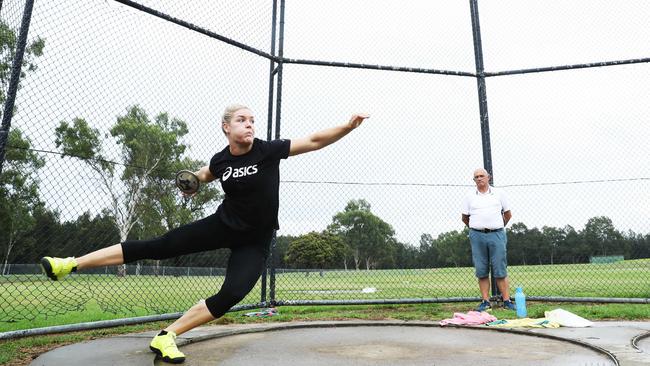
“It’s kind of surreal to be able to sit here and talk to you about competing again,” she says. “Because it’s been so hard. So overwhelming. So frustrating. Four to six weeks after spinal surgery, I still wasn’t able to move my right arm.
“Knowing how serious the injury was, and how severe the impact could be on my life, let alone sport, the priority the whole time was simply to get function back so I could pick up a bag again, cut up veges, just the every-day simple stuff.
“I lost the ability to do a lot of those things. I was told the arm might not ever get back to 100 per cent function. It might only be 80 or 90 per cent. It’s been such an unknown. I got to the point where I thought, if I ever get to throw a discus again, that will be an absolute bonus.
“All I really wanted was to be able to do the normal things again. I’ve made a lot of progress in the last couple of months and I’m just so lucky and grateful to be competing again. It’s been a very long road.”
It was February last year when Stevens was stopped cold. “I was doing a lift in the gym,” she says. “A bench-press. I felt something straight away, as soon as I let the bar go. I felt stiffness and tightness and restriction in my neck. But I’d felt those things before, so you continue on.
“That was on a Wednesday. I had some treatment, tried to free up my neck and had another throw on the Saturday. By the end of that session, I was only throwing about 55m, which is about 15 metres off my best. I called up my trainer and said, oh, I just feel so tired. My arm feels tired. It’s only a kilogram discus we use and my arm had never actually felt tired before. I thought maybe I’m just in a training hole. Maybe I just need to back off the training.”
At that stage, before COVID-19 took its grip, the Games were still on.
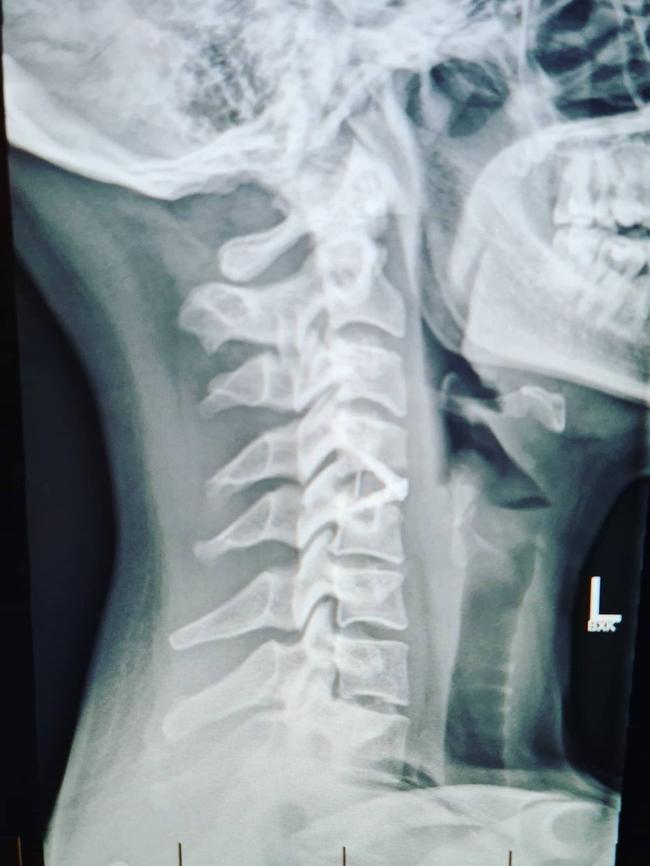
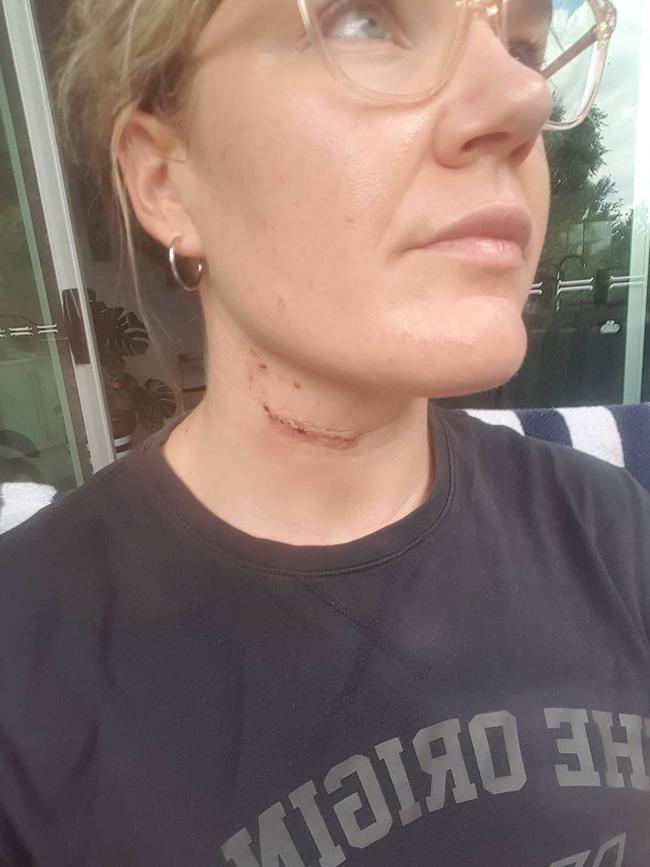
“I went back to the gym on the Monday and it was OK,” Stevens says. “On the following Wednesday, I did another exercise that made it completely flare up. It was shocking. I couldn’t lift my arm at all. The nerve pain I had was excruciating. I don’t think I slept for three nights straight because I couldn’t lie down. I couldn’t stand up. I couldn’t lie on my back or on my side. Even sitting, I was in a lot of pain.”
An MRI scan revealed a herniated C4-C5 disc in her neck. “It had popped out and shattered in two,” she says. “One part was pushing on my spinal cord and the other part was pushing on the nerve root. I’m not going to lie, I was devastated. There were a lot of tears. A lot of doubts. A lot of laugh-or-cry situations. It was really tough. I had extreme weakness and a lot of pins and needles to start with.”
And then?
“I was told, ‘Look, we can’t give you a timeline with this one,’” the 32-year-old says. “You just have to wait for the nerve to come back. It was very slow progress each week. I was able to lift a one kilogram dumbbell. Then two kilos. I spent four weeks at the 4kg dumbbell and thought, why aren’t I improving? It’s been a 12-month recovery. Obviously the most severe injury I’ve ever had.
“It was just really hard always asking yourself, ‘Will things ever go back to the way they were?’ It took about six months to get just a little bit of strength back. Finally I could lift my arm, but there was still a significant difference. The idea of throwing was still a long way away.”
And then?
“I wasn’t back to full strength but I thought, oh, I’ll just pick up a discus and flick it,” she says. “Just handle it again so I don’t completely lose touch. They said I could start doing standing throws because that wasn’t going to stress out the nerve too much.
“We just had to be really careful with how much I did. I picked up an 800g discus, which is lighter than our competition discus, and it went about 30m. I thought, yep, got a long way to go.”
A 20-year-old Stevens came ninth on Olympic debut at the 2008 Beijing Games, throwing 60.15m. She won her world championship the following year with a throw of 65.44m at Berlin. She came 12th at the 2012 London Games before getting the gold medal at the 2014 Commonwealth Games at Glasgow.
“She was an agonising fourth at the 2016 Rio Games before throwing her personal best of 69.64 to take silver at the 2017 world championships in London. That mark would have won gold at Rio by 45cm.
She defended her Commonwealth title on the Gold Coast in 2018 ahead of her serious tilt at an elusive Olympic medal in Tokyo. Without the pandemic-caused postponement, she would never have made it to Japan – but she wasn’t doing one-arm cartwheels about the delay.
“I was about four weeks post-surgery when the Olympics were called off,” she says. “My arm function hadn’t improved but surprisingly, I was still really disappointed and sort of devastated that they were postponed. Because as athletes, we’d been looking to 2020, and the Olympics in Tokyo, for so many years.
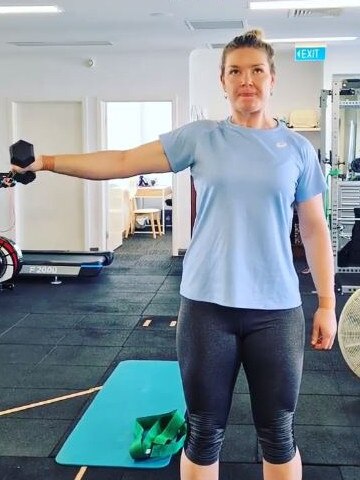
“Even though I was sitting there and still couldn’t move my arm, I really was devastated by the loss. I was like, what’s happening here? Why am I thinking like this? It was really strange. I think it was because I was still thinking with my rehab, right, I’m going to be ready by August. I have to be ready by August. In hindsight, that would never have happened. I wouldn’t have been able to go. No way. The circumstances around the Olympics being postponed are terrible but I guess the silver lining is that it’s given me the extra time I’ve needed.”
The Sydney Track Classic is Stevens’ first competition in 16 months. Only her third competition in the past three years. Before the surgery, she missed a year because of a back injury.
Her goals are the same as they’ve ever been. To have an Olympic medal in her collection after Tokyo and to become the first Australian woman to cross the magical barrier of 70m. Her PB is only an A4-sized sheet of paper shy of her sport’s equivalent of the four-minute mile.
“An Olympic medal would be a lifetime’s worth of work,” she says. “It would be a life’s dream fulfilled. That’s what I said when I was 16 years old – I want to win an Olympic gold medal. Sixteen years later I’m still here, trying to achieve it. I came fourth last time.
“Very close, very far away – but that’s what has driven me my whole career. To be able to throw over 70 metres and win an Olympic medal.
“It will take something over 70m to do that, and I’m still very much determined to get there. That’s something that has kept me motivated the whole time. Seventy-metres doesn’t feel as far out of reach as it did a year ago.”
Stevens will contest the Sydney Track Classic before the Queensland Track Classic on March 27 and the Australian championships from April 12. Her Olympic qualifying throw for the Tokyo Games still stands.
“It’s been a long time since I’ve competed but I’m ready to throw myself into the deep end and try to swim,” she says. “I’m super-excited and nervous and grateful to be back in athletics. Just to see the girls I normally compete against will be a thrill.
“I’m definitely not in PB shape yet. I’m going to be quite rusty but the only way to put some shine on it and improve is to get back into competition. I’ve competed on massive world stages – Diamond Leagues, world championships, Olympic and Commonwealth Games – but I’m really quite nervous about this. I think that just shows how much you care about it.”
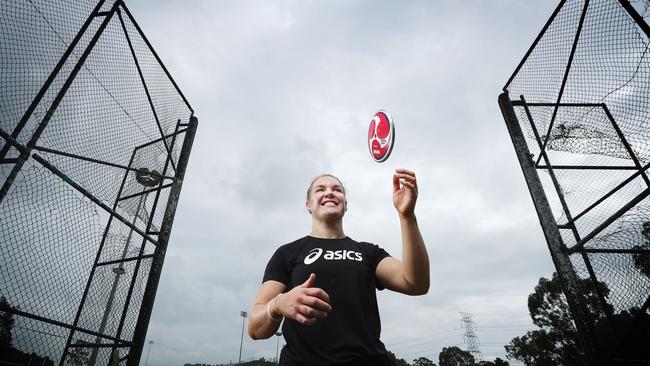
Stevens hopes she’s about to have the greatest year of her career. Which is saying something. She says extensive core, lower-body, back and neck work were blessings in disguise while her arm was busted. And now her right shoulder is feeling stronger than it ever has.
“I think about Saturday night and the process of picking up my competition number again, putting on my uniform again, walking into warm-ups and doing my first throw … the nerves and excitement come from knowing this is still my happy place.
“As soon as I get a discus in my hand, and I’m in the circle, it’s just my happy place. That’s the best way I can describe it.
“This time last year, I look back on the times I’ve thought, you know, this is just really so hard. I didn’t know if I’d ever pick up a discus again.
“I think about the tears and the times of trying to be meticulous with my rehab. Of trying to do every session just right. Every repetition. Every day. I’ve fought tooth and nail to make it back and I’m feeling just so grateful to be able to give it another go.”


